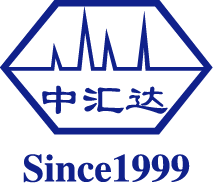|
Work Time Mon to Fri :8:00-17:00 Contact Details Tel::0411-86732112 Tel::0411-86732113 Tel::0411-86730533 fax::0411-86732114 E-mail:zhd@zhonghuida.cn URL::http://www.naturally-grace.com |
How to Install Capillary Chromatographic Column
Thanks you for using the highly efficient quartz capillary chromatographic column produced by Dalian Zhonghuida Scientific Instrument Co., Ltd. If there is any quality problem, please call 0411-86732112. We will help you to solve the problem timely.
The installation steps of capillary chromatographic column are as follows:
Step 1: Check the gas filter, carrier gas, injection pad and liner tube, in order to make sure that the auxiliary gas and detector gas are smooth and effective. If compounds with higher boiling point have been detected, it is necessary to clean or replace the liner tube at the injection port.
Step 2: Install screw nuts and guard staples on the column, and carefully cut both ports of the chromatographic column levelly. Install corresponding screw nut and guard staple at one end of the chromatographic column. At this time, each of the two ports of chromatographic column can be served as front or back port. The support part of the bracket of chromatographic column should always face the column door. After installing screw nuts and guard staples, cut the ports of chromatographic column, and examine them with a magnifying glass to make sure the incision and tube wall have a right angle in between, and there is no residual debris, rough edges or uneven surfaces.
Step 3: Connect chromatographic column with injection port. In general, the top of chromatographic column should always be at the middle and lower part of the liner tube of the injection port. After the injection needle is completely inserted into the injection port through the pad, it would be relatively ideal if the needle point is 1
Step 4: The connection carrier gas must be high-purity (99.999%) nitrogen (or helium). While using polar columns (such as FFAP and PEG
Step 5: Connect chromatographic column to the detector. The matters needing attention during installation are basically the same as the above mentioned (Step 3) notice for connection between chromatographic column and injection port. During the installation, pay attention that the column end should be higher than the gas make-up point, or follow the installation instructions for chromatograph.
Step 6: Detect gas leakage. Before heating the chromatographic column, detect whether the GC system leaks gas. It is advised to use the mixed solution of isopropanol and water (1:1) for examination.
Step 7: Chromatographic column aging. After column installation and system leak detection, chromatographic column aging can be carried out. Raise the column temperature program to In this way the constituents absorbed in the column will be blown out, in order not to affect your analysis. Finally, reduce the column temperature to required temperature, and then analyze actual samples. TypeInfo: Technical Information Keywords for the information: |

